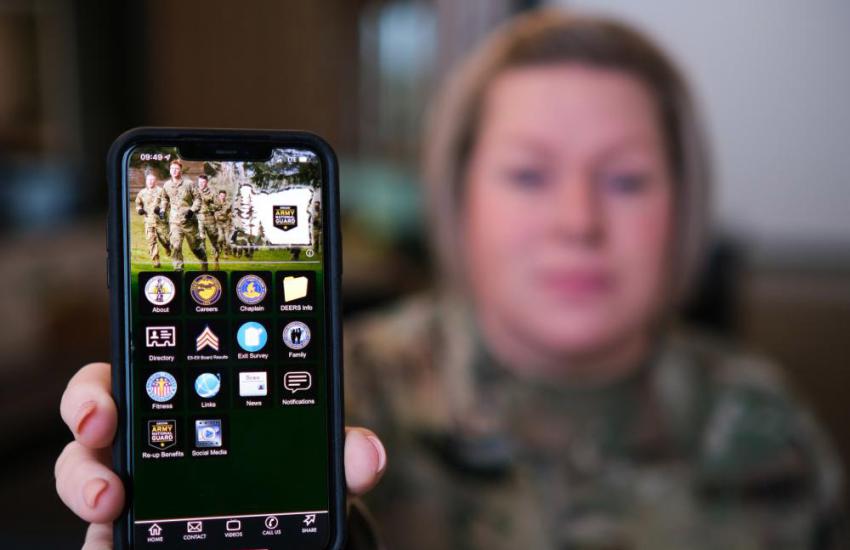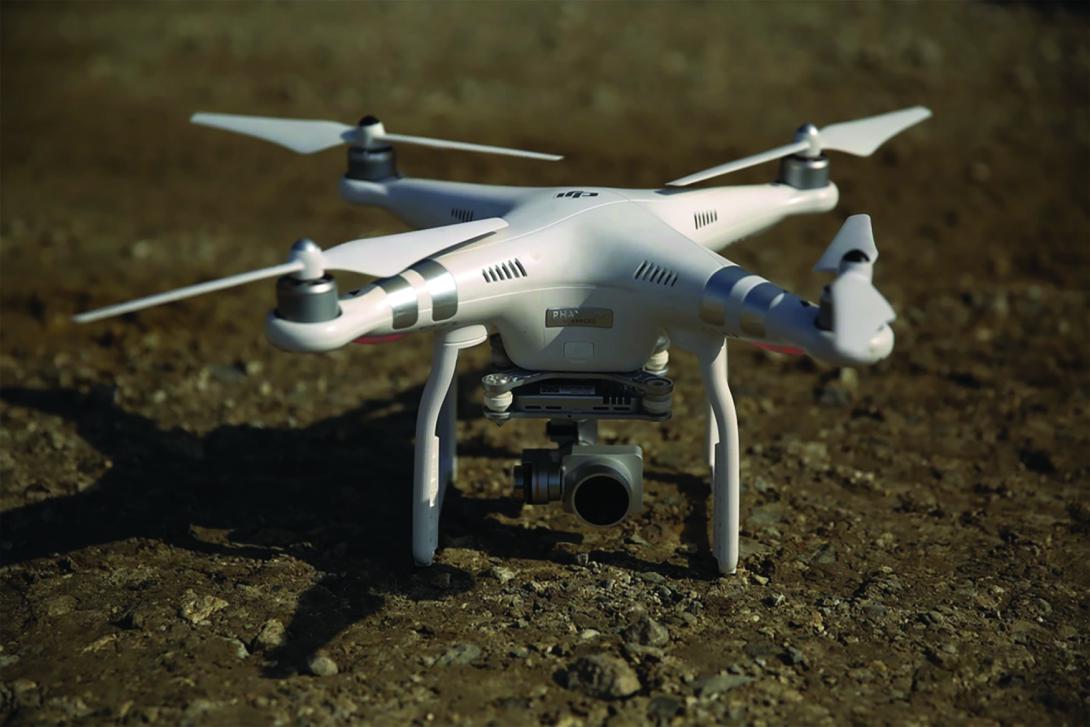Consumer Electronics Invade the Battlefield
Devices once designed for recreation are now helping to aim guns and, in some cases, even bring about surprise attacks.
Small drones are among the most dangerous weapons on the battlefield, as the war in Ukraine shows.
China-based consumer drone manufacturer DJI has become a weapon of choice for both sides in Eastern Europe, and one side has received more attention for its flexibility.
“The use of consumer drones by Ukrainian forces for attacking Russian troops rather than for surveillance is another indication of the innovative employment of drones generated by the war in Ukraine,” according to a report by the Air University.
Unrelated to recent actions in Europe, the Department of Defense sanctioned DJI for having links to the Chinese armed forces. The company denied those links in a statement and said that it discourages military use of its products. DJI has suspended business in both Russia and Ukraine.
Still, DJI is the leading supplier of small surveillance drones, according to numerous accounts and reports. Its alternative use—to deploy small ordnance against infantry positions and vehicles—has received special social media attention and has produced some of the most gruesome pictures from the field shared on social media.
Donors worldwide procure the drones locally and donate the units to Ukraine, bypassing the company’s efforts to keep its products off the battlefield.
While drones have captured the most interest, the ubiquitous cellphone has imposed new rules for all combatants, especially given the volume of available data.
One of the most dramatic reports that surfaced during the war in Eastern Europe came after many questioned the high mortality rate among Russian top field officers. Weeks after the invasion, U.S. officials told The New York Times that at least one Russian general was killed after making a cellular phone call that was intercepted by Ukrainian intelligence.
By June, the Center for International and Strategic Studies was putting into context the dangers for top Russian officers approaching the front.
“Roughly a dozen Russian generals and other senior officials were killed on the battlefield,” stated the report. Since then, tactics for both sides have most likely changed.
On January 1, 2023, six HIMARS (High Mobility Artillery Rocket System) rockets landed at the Professional Technical School No. 19 in Makiivka, Donetsk, region. At least 89 Russian service members were killed, and an unspecified amount of ammunition was lost, according to Moscow.
“The main reason for what happened was the inclusion and massive use, contrary to the ban, by personnel of mobile phones within range of enemy weapons. This factor allowed the enemy to locate and determine the coordinates of the location of military personnel for launching a missile strike,” was how the Russian Ministry of Defence explained the embarrassing loss in an official statement on social media.
Small electronics pose risks if used irresponsibly, and stopping the employment of these devices is also a nightmare in modern warfare. “Every time you press a button, you’re turning yourself in,” said Gen. David H. Berger, commandant of the U.S. Marine Corps, at a recent media event.


Russian losses in Makiivka underscored Gen. Berger’s remarks two weeks before the catastrophe.
But wholesale use of consumer electronics also allows many to process open-source intelligence and produce more accurate accounts of what is really happening on the ground, despite the confusion and propaganda presiding over military action.
The Institute for the Study of War has capitalized on this amount of information and has created an open-source intelligence report that has served audiences around the world following major conflicts, including Ukraine.
Another intelligence aggregator is the Centre for Information Resilience. This nonprofit was established solely to document and follow open-source content originating from the ground in Eastern Europe and relevant to the ongoing invasion of Ukraine.
Still, one overarching feature around commercial technology brought to the battlefield is that it is risk-free in case the enemy obtains it.
The key behind using drones, smartphones or open-source intelligence is not in the technology itself available to all parties in conflict, but the specific developments around these systems and the problems addressed.
Open-source intelligence is a form of information gathering that requires no clearance or authorization. It is developed by organizations that distribute much of this processed information freely. In some cases, businesses have leveraged their techniques to generate profits.
Off-the-shelf drones have proven effective in specific niches, and Ukrainians have used them with devastating effects.
Commercially Available Drones Capture Data
An avenue for innovation lies in the combination of commercially available parts to create a system that, if captured, can be reverse-engineered into a technology store in any city.
Iran attempted to capture a Saildrone Explorer observation drone the Fourth Fleet uses for surveillance in the Persian Gulf. The first attempt that received publicity happened in August 2022.
“The U.S. Navy observed the IRGC [Islamic Revolutionary Guard Corps] Navy support ship towing a Saildrone explorer unmanned surface vessel, and what we assessed was an attempt to detain it,” said Brig. Gen. Patrick S. Ryder, USAF, Pentagon press secretary, shortly after the incident.
The Navy immediately intervened and according to the U.S. government account, it was stopped.
“The USS Thunderbolt ultimately prevented Iran from essentially stealing one of our drones, our unmanned surface vessels,” added Gen. Ryder.
After that incident, Irani armed forces succeeded. In September, Irani armed forces intercepted two of the same surface surveillance drones. Shortly afterward, the devices were returned but had spent over a day in hostile hands.
Nevertheless, the efforts yielded meager results.
“The drones are available commercially and do not carry classified information,” officials told U.S. media.
The value is not in the equipment itself but in how the data it captures is processed in a data center, not the drone.
Off-the-Shelf Weaponry Proves Cost-Effective
When it comes to underwater vehicles, consumer components also help save money.
An underwater vehicle can deploy a set of buoys floating with no tether and observing its surroundings. “These buoys will visually recognize ships that come through a choke point,” said Dennis McLaughlin, CEO and president of Rite-Solutions.
This disposable four-foot-long tubular device can linger in the area until currents move it to another location. Then, they can be retrieved or simply abandoned. The device uses off-the-shelf technologies, including a Raspberry Pi single-board computer.
It also includes GPS and a ballast to ensure upright flotation and a commercial camera to capture images and process them in its on-board computer.
The information gathered is relayed back using Wi-Fi or, if the mission requires it, a portable data connection comparable to a satellite phone. This configuration would shorten the life of the product and increase costs but still leaves the price of one unit well below devices currently in use to accomplish these missions.
The processing unit fits in the palm of a hand and has a retail price well below $10. The final cost of the whole device is expected to be below $200 if the Navy buys them in scale. For now, it is navigating the acquisition process.
“We put together our own database of a set of ships that would come through. We would have liked to have used more ships because the better the database, the better your solution is,” McLaughlin said.
McLaughlin estimates a sonobuoy may cost at least 50 times more than his company’s device, and if caught by the enemy, secret technologies could potentially be reverse-engineered.
This system has no secret components and most programming in its on-board computer is based on widely available image recognition artificial intelligence.





Comments